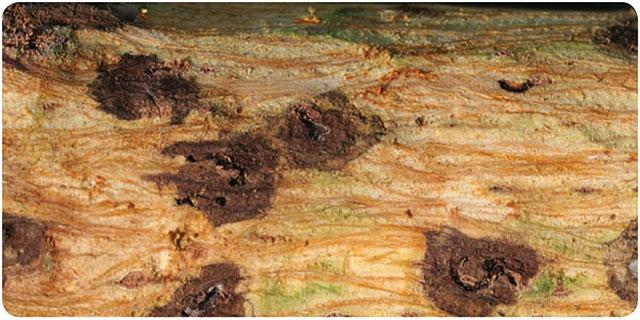Thousand Cankers Disease
Thousand cankers disease (TCD), a disease complex between a fungus and the walnut twig beetle that is killing walnut trees. Walnut twig beetles carry the fungus and, as the beetles tunnel in tree bark, they spread fungal spores causing many small independent cankers to form. These canker eventually coalesce to form what appears to be one big canker and can girdle tree branches and trunks. TCD is spreading and threatens Kentucky’s walnut tree species, particularly black walnut.
What is it?
The symptoms of TCD can be hard to spot. Walnut twig beetles, Pityophthorus juglandis, are very small and easy to overlook. They are brown and typically less than one 1/16th of an inch long. The emergence holes they create in infested wood are also tiny and easy to miss. In addition, the fungus that they carry (Geosmithia morbida) does not cause externally visible symptoms until the disease is advanced. Neither the fungus nor the walnut twig beetle on its own can cause lethal disease, however the two are typically present together.
Both the fungus and the beetle are thought to be native to the southwest where their main host is Arizona walnut. However, a broad range expansion of the beetle and its fungus have introduced them both to highly susceptible walnut species outside of their ancestral range, particularly black walnut.
What does it do?
Walnut twig beetles and their larvae tunnel and form galleries in the bark of walnuts. The beetles can carry the fungus to new trees and uninfected tree tissue, burrowing shallowly just beneath the tree bark. The fungus then grows in the outermost part of vascular system of the tree, cutting off nutrients and eventually girdling the tree.

Thousand Canker Disease Resources:
Read Kentucky Woodlands
Magazine Articles
New Tree Pests Threatening from the North and South
